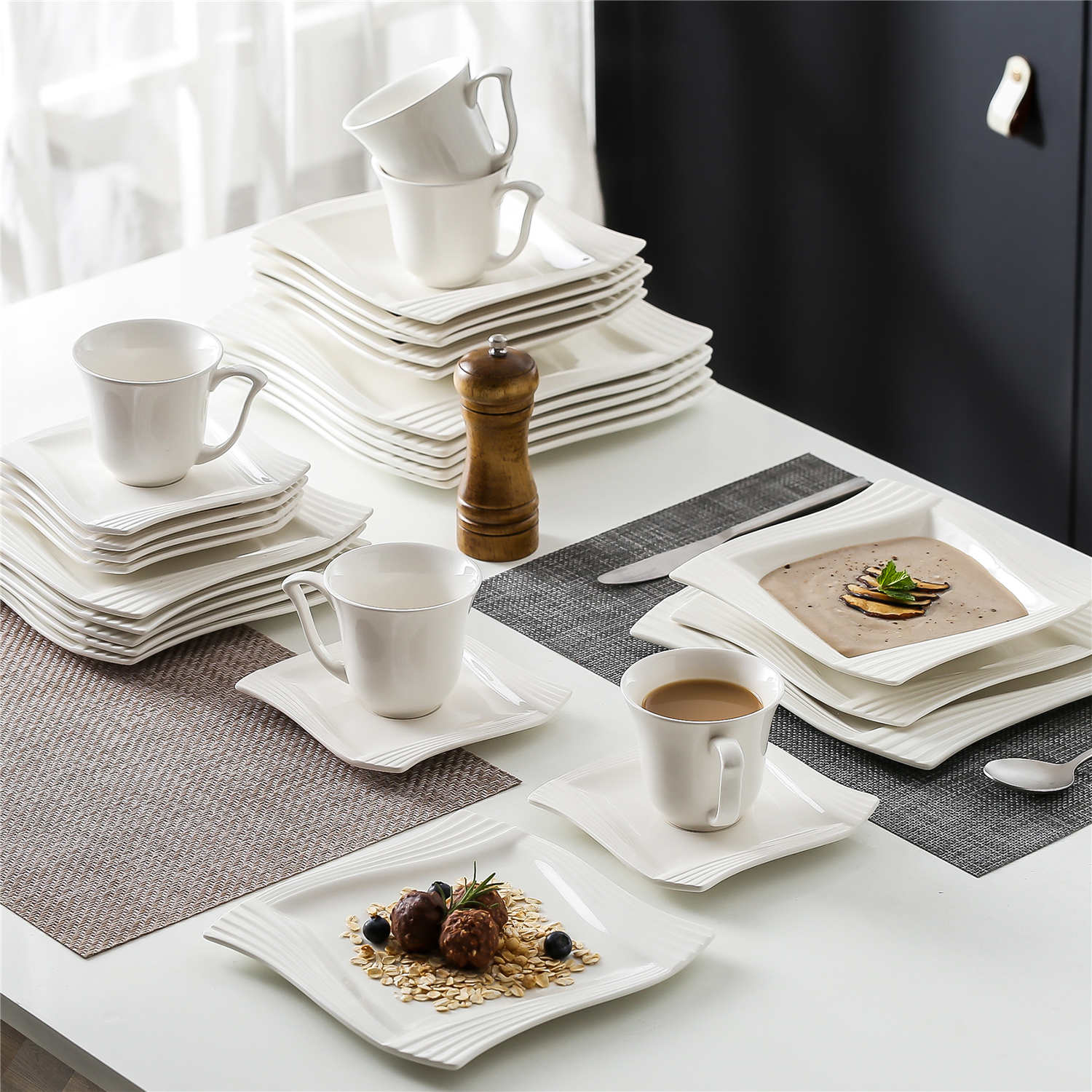Unveiling the Secrets of Exquisite Porcelain: A Timeless Journey Through Beauty and Care
Porcelain sets have long been celebrated for their elegance and craftsmanship, making them cherished items in homes around the world. The allure of porcelain lies not just in its aesthetic appeal but also in its rich history and cultural significance. From grand dining occasions to intimate gatherings, porcelain sets elevate every experience, adding a touch of sophistication and grace. As you embark on a journey through the enchanting world of porcelain, this article will delve into its defining features, explore its storied past, and offer practical care tips to maintain its beauty. Whether you are a seasoned collector or new to the charm of porcelain, understanding these elements will deepen your appreciation for these timeless treasures.

Features of Porcelain Sets
Porcelain is renowned for its unique properties, which set it apart from other types of ceramics. Composed primarily of kaolin clay, feldspar, and quartz, this fine material is fired at extremely high temperatures, resulting in a product that is both durable and translucent. One of the most striking features of porcelain is its delicate beauty; it often boasts intricate designs and a glossy finish that can captivate the eye. The durability of porcelain, however, should not be underestimated; it is chip-resistant and can withstand high temperatures, making it suitable for both everyday use and special occasions.
There are various types of porcelain sets, each serving different purposes. For instance, dinnerware sets are designed for mealtime, while tea sets are beautifully crafted for serving beverages. Additionally, decorative porcelain pieces, such as vases and figurines, are often sought after for their artistic value. These sets can range from simple white porcelain to elaborately decorated pieces featuring floral patterns or gold accents. A friend of mine, who is an avid collector, often shares her experiences of finding rare porcelain sets at flea markets, each with its own story and character, enhancing the emotional connection one can have with these exquisite items.
Historical Journey of Porcelain
The history of porcelain is as fascinating as its beauty. Originating in China around the Tang Dynasty (618-907 AD), porcelain was initially a luxury item reserved for the elite. It was during the Song Dynasty (960-1279 AD) that porcelain truly flourished, with artisans perfecting the art of crafting fine, white, and translucent wares. The Ming Dynasty (1368-1644 AD) marked a key milestone in porcelain history, as the famous blue and white porcelain emerged, showcasing intricate designs that would become iconic worldwide.
As trade routes expanded, porcelain found its way to Europe, captivating the aristocracy and inspiring local artisans. By the 18th century, several European countries had established their own porcelain factories, each adding regional styles and innovations to the craft. This period saw the rise of notable porcelain production centers, such as Meissen in Germany and Sèvres in France. The cultural significance of porcelain is evident, as it became a symbol of status and refinement. My grandmother often reminisced about her collection of fine porcelain, passed down through generations, each piece reflecting not just artistry but also the stories and traditions of our family.
Caring for Your Porcelain Set
Maintaining a porcelain set requires a thoughtful approach. To ensure its beauty and longevity, it’s important to avoid abrasive cleaners and scrub pads, which can scratch the surface and dull the glaze. If cleaning is necessary, it is best to use a soft sponge and mild soap, thoroughly washing your porcelain.
Storage is another crucial factor. When storing your porcelain, consider using padded dividers to prevent pieces from clinking against each other, which can lead to chips or cracks. It’s also a good idea to keep porcelain sets in a cool, dry place away from direct sunlight to prevent discoloration. For those delicate tea sets, consider displaying them in a glass cabinet to protect them while allowing their beauty to shine. A friend of mine who collects porcelain always emphasizes the importance of handling each piece with care, treating them as the treasured items they are. By following these care tips, you can ensure that your porcelain sets remain beautiful and cherished for years to come.
Embracing the Timeless Beauty of Porcelain
Porcelain sets are not merely functional items; they are pieces of art that carry centuries of history and craftsmanship. From understanding their defining features to appreciating their rich heritage, we can see why porcelain has remained a beloved choice across cultures. By taking the time to care for these exquisite sets, we honor their beauty and the traditions they represent. Whether you are serving dinner to friends or admiring them on a shelf, porcelain sets invite us to create memories and celebrate the art of fine living. So, embrace the allure of porcelain and let it inspire your next gathering or collection.








